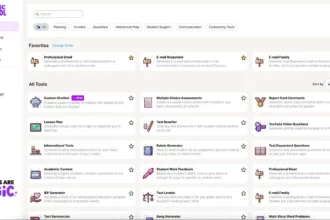Table of Contents
ToggleEmerging Threats Demand Proactive Cybersecurity Response
As AI-powered attacks rise and traditional ransomware groups decline, organizations must shift from reactive defenses to proactive, intelligence-led cybersecurity. Adapting to this new threat landscape requires a strategic approach centered on prevention and real-time risk assessment rather than just remediation.
From Reactive to Proactive Security
Legacy ransomware groups are collapsing. Meanwhile, new AI-enhanced attacks introduce complex challenges. Cybersecurity can no longer rely on reacting after breaches occur. Instead, firms must anticipate threats through intelligence and continuous monitoring. This approach improves threat detection, reduces response times, and strengthens resilience.
Persistent Cybersecurity Challenges
Common Vulnerabilities Exploited
- Unpatched assets remain a major weak point.
- Device misconfigurations expose systems repeatedly.
- Social engineering continues to facilitate breaches.
- Flat networks ease lateral movement for attackers.
These recurring issues underline the importance of consistent maintenance and user awareness. Organizations often overlook basic cyber hygiene, which remains critical in defense.
Ease of Access for Threat Actors
Many breaches start with “open doors” left unguarded. Additionally, bad actors gain advantage through cheaper tools, such as password hash cracking, which is now affordable and accessible.
Policy, Visibility, and Multi-Factor Authentication (MFA)
Effective cybersecurity policy and clear visibility into policy enforcement are essential. Implementing MFA significantly reduces risks. Executives and IT personnel are prime targets; thus, monitoring their access is crucial. Tools like Microsoft’s Credential Guard protect against hash-cracking attacks by isolating credentials.
Access Techniques Employed by Attackers
Initial Access Vectors
- Phishing and social engineering campaigns have grown in volume and sophistication.
- Internet-facing vulnerabilities and misconfigurations offer entry points.
Network appliances remain targeted. Patching delays, sometimes exceeding five months, leave organizations vulnerable. Banks generally patch faster but challenges persist.
Rise of Zero-Day Exploits
Zero-day vulnerabilities were once exclusive to nation-state actors and advanced persistent threats (APTs). Now, ransomware groups and cybercriminals increasingly leverage zero-days due to improved funding. This evolution demands quicker detection and patching.
Misconfigurations and Exposed Services
- Device misconfigurations, especially on employee endpoints, make up a large number of breaches.
- Exposed remote services allow attackers easy entry.
- Unsecured devices act as “gold mines” for intruders.
Organizations must improve visibility into device configurations and user-to-application interactions to detect these risks early.
Proactive Strategy: Data Integration and AI
Breaking Data Silos
Risk management suffers when done in isolated pockets. Integrating telemetry and security data into a centralized platform enables comprehensive risk assessment. This unified view helps uncover connections across cloud, endpoints, and network environments.
Comprehensive Risk Assessment
| Parameter | Description |
|---|---|
| CVE and CVSS Scores | Identifying vulnerability severity. |
| Configuration Status | Detecting misconfigurations. |
| Identity Risk | Evaluating access rights and compromises. |
| Environment Coverage | Assessing cloud, endpoint, and network risk. |
Once risks are identified, they receive scores from 1 (low risk) to 100 (critical risk). This ranking focuses attention on the most urgent vulnerabilities.
Attack Path Prediction with AI
AI models simulate attacker behavior by analyzing the easiest paths to breach critical assets. Generative AI excels at predicting an attacker’s next move based on existing vulnerabilities. This produces actionable insights, prioritizing defenses where they matter most.
Limitations and Flexibility in AI-Driven Security
AI cannot cover all threat scenarios due to differing organizational priorities, goals, and industry regulations. Hence, cybersecurity must be modular and adaptable to each company’s unique context. Flexibility ensures solutions meet shifting requirements effectively.
Key Takeaways
- AI-driven cyber threats require a shift from reactive to proactive security strategies.
- Common vulnerabilities like unpatched assets and misconfigurations remain major risks.
- Phishing and internet-facing misconfigurations are top initial access methods for attackers.
- Zero-day exploits are now used by regular ransomware groups, increasing attack severity.
- Centralizing telemetry and unifying risk data breaks silos and improves risk visibility.
- AI enhances security by predicting attack paths and prioritizing risk remediation.
- Security must be flexible and modular to adapt to organizational differences and evolving threats.
Emerging Threats and AI Shifts Demand Proactive Cybersecurity Response
As AI-powered cyberattacks rise and traditional ransomware groups weaken, organizations can’t afford to stay in reactive mode. They must pivot swiftly to a proactive and intelligence-led security posture. This shift is not just a best practice—it’s an urgent necessity, fueled by emerging threats that constantly evolve.
Let’s unpack why this proactive strategy is pivotal today, highlight persistent cybersecurity challenges, and explore how AI integrates into a comprehensive, future-ready defense.
The Evolving Cyber Threat Landscape: Why Reacting Isn’t Cutting It Anymore
For years, companies have scrambled to patch vulnerabilities after an attack. But attackers don’t give grace periods anymore. Today’s cybercriminals exploit unpatched assets, misconfigurations, and social engineering with devastating efficiency. Throw AI into the mix, and cyberattacks scale exponentially.
Legacy ransomware groups, once prowling the cyber world, are fading. But their place is taken by highly sophisticated AI-empowered attacks that predict and exploit weaknesses faster than humans can react. That means companies must anticipate threats before they strike. Welcome to intelligence-led cybersecurity.
Why Do Organizations Struggle? The Old Issues Aren’t Old News
When cybersecurity experts review incident responses, they observe hauntingly similar patterns. Unpatched systems, poor network segmentation, and human error remain sadly evergreen problems. In some cases, assets remain vulnerable for over five months. That’s a long unlocked door for attackers!
It’s as if the cyber doors are wide open, and attackers simply stroll in. Plus, it has never been easier and cheaper to crack password hashes, thanks to accessible cracking tools widely available online.
So, what’s the solution? Better policies and continuous visibility into compliance across IT and executive teams. Enforcing Multi-Factor Authentication (MFA) and deploying security features like Windows Credential Guard are essential deterrents.
“Credential Guard basically makes those hash-cracking attacks a non-starter. No excuses.”
Attackers’ Favorite Tricks: What Doors Are They Knocking On?
- Social Engineering: Phishing attacks keep evolving in technique and volume, making people the weakest link.
- Internet-Facing Misconfigurations: Misconfigured devices expose critical vulnerabilities.
- Slow Patching of Network Appliances: Slow software updates provide a persistent breeding ground for attackers, with banks often leading the pack in better patch management.
- Zero-Day Vulnerabilities: Once exclusive to nation-states, zero-day exploits are now within reach of criminal gangs who have deep pockets.
- Exposed Remote Services & Unsecured Devices: Devices without security protections are simply goldmines for cybercriminals hiding in plain sight.
These tactics highlight the importance of continuous monitoring and patching, as well as the need for proper endpoint security and network segmentation. Visibility into how users interact with apps and data forms a critical piece for early threat detection.
Data Integration and AI: The New Backbone of Proactive Cybersecurity
Cybersecurity efforts traditionally suffer from fragmented data silos—security teams working with isolated datasets and tools. This disjointed approach makes connecting the dots and spotting integrated risks nearly impossible.
Modern security calls for centralized telemetry, where all risk-related data converges. Imagine scoring each vulnerability, misconfiguration, and identity risk from 1 to 100. This unified risk scoring system illuminates which threats demand immediate attention.
Enter AI-powered attack path prediction. This technology thinks like an adversary, calculating the path of least resistance toward high-value targets. Generative AI excels at prediction—anticipating the attacker’s next move based on patterns and data.
By harnessing AI, security teams receive clear, prioritized signals amid complex data streams. This improves response times and prioritization, turning overwhelming information into action.
But AI Isn’t a Magic Wand—Adaptability Remains Key
AI can’t handle every scenario—especially when industries have differing compliance needs and priorities. Blanket solutions don’t work. Flexible, modular security frameworks, tailored to the unique risks and goals of each organization, remain best practice.
At Trend Micro, experts advocate for such adaptability because cyber threats and business requirements constantly shift. Your security posture must evolve just as quickly.
Practical Tips for Building a Proactive, AI-Savvy Cyber Defense
- Enforce Basic Hygiene: Patch aggressively and regularly. Five months with unpatched systems? Unacceptable.
- Implement MFA Everywhere: Don’t give attackers an easy way in. MFA blocks many common exploits.
- Use Built-in Security Features: Activate Credential Guard and other native OS protections to thwart hash-cracking and alike.
- Centralize Security Data: Break down silos. Use platforms that consolidate risk telemetry for holistic analysis.
- Leverage AI for Prediction: Invest in AI-driven tools that predict attacks by analyzing your unique environment and attack patterns.
- Improve Visibility: Know user interactions and network activities intimately to spot anomalies early.
- Create Flexible Security Frameworks: Customize security according to your regulatory and operational landscape.
What Can Organizations Do Now? Starting with the Basics—But Smarter
The challenge isn’t just fancy AI or shiny software—it’s also about culture and policies. Leadership must prioritize cybersecurity visibility and accountability. Executives and IT teams alike are prime targets; defending them means defending the entire organization.
Start by aligning business and security goals. Map out your digital assets and assess them regularly for vulnerabilities using centralized data. Prioritize fixes based on real risk scores, not guesswork.
Apply lessons from incident response: unpatched devices, misconfigured endpoints, and social engineering attacks remain the most frequent culprits. Fix these consistently while layering AI-based prediction for new, emerging threats.
Looking Ahead: The Future of Cybersecurity in an AI-Driven World
As AI evolves, so will attackers’ techniques. Cybercriminals gaining access to zero-day exploits mean organizations must race to keep pace. Proactive defense isn’t an option anymore—it’s survival.
By combining rigorous policy enforcement, widespread use of security features, and AI-driven risk analysis, organizations can build a dynamic defense. They can anticipate, adapt, and neutralize threats before damage occurs.
What if your cybersecurity could predict the next breach before it happens? That’s the future we’re stepping into. Are your defenses ready?
What are the main reasons organizations must shift to proactive cybersecurity?
Legacy ransomware groups are falling apart, but new AI-powered attacks rise. Organizations must lead with intelligence, not just react to threats after they happen.
Which vulnerabilities do attackers exploit most frequently today?
Unpatched systems, misconfigurations, social engineering, and flat networks remain major challenges. These recurring issues keep giving attackers easy access points.
How does AI improve risk assessment in cybersecurity?
AI helps predict attack paths and prioritize vulnerabilities based on the likelihood of exploitation. It connects data from endpoints, cloud, and networks to score risks effectively.
Why are social engineering and internet-facing flaws common initial access points?
Phishing attacks have become more effective and frequent. Misconfigurations and internet-facing vulnerabilities create open doors for attackers to enter networks.
What role do policies and tools like MFA play in defending against attacks?
Strong policies, clear visibility, and multi-factor authentication protect critical targets. Features like Credential Guard block password hash-cracking efforts, limiting attacker success.
How does breaking down data silos enhance cybersecurity strategies?
Combining telemetry from all systems reveals hidden risks. Without integration, risk management becomes fragmented and misses connections between vulnerabilities.





